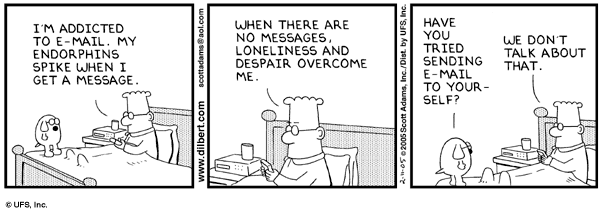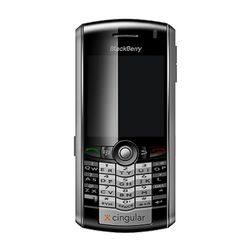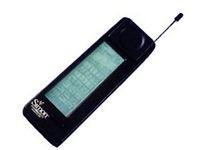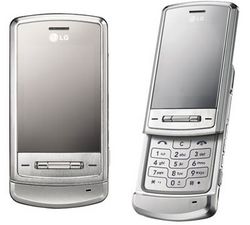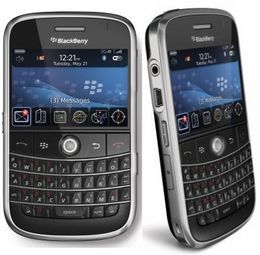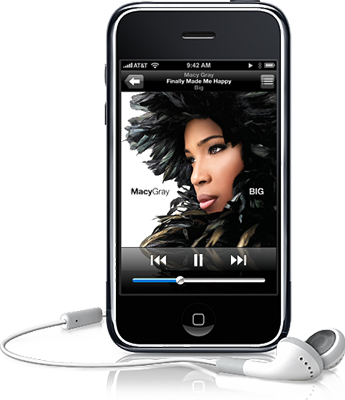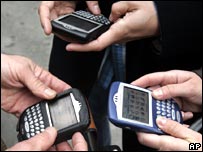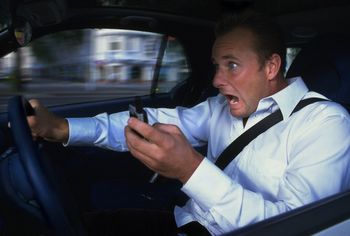T13 GROUP4
Contents
- 1 Our Topic:
- 2 Project Statement
- 3 The Evolution of Mobile Communication Devices
- 4 The Issues
- 4.1 CrackBerry: Addiction to Mobile Communication
- 4.2 The Pocket Sized Office:The Inability To Escape The Office
- 4.3 Mobile Misconduct: Cheating with the help of Your Cellphone
- 4.4 Distracations: The Dangers of Using Mobile Devices while Driving
- 4.5 Shift from landline to cell phone use in households
- 4.6 Security and Malware
- 5 Arguments
- 6 Conclusion
- 7 References
- 8 TA Comments
Our Topic:
Topic:[Smartphones] and [Cellular devices]
Project Statement
In the modern world, technology plays a huge role in everyday life. Within the last 20 years many technological advances come to mind none being more apparent then advances in the area mobile communication. Across the country a huge percentage of the population make use of such devices in large parts of their everyday lives. The Smartphone takes the advantages of the cell phone and brings the bar up to an even higher level allowing its users the ability to accomplish even more with their mobile devices using such functions as email and wireless internet. But the convenience that this technology brings is not without flaws. On this site, our group will explore the possible issues that come with owning a mobile device and the effects they can have on you.
Issues:
- [Addiction] and Dependency with portable communication devices.
- The inability to escape the office.
- Breach of privacy and academic laws and guidelines.
- The distractions and the dangers they bring.
The Evolution of Mobile Communication Devices
Past History
-History of the Cellular telephone:
The concept for the cellular device was developed in the late 1940s by Bell Laboratories, originating from the invention of the mobile car phone. The first fully automated mobile phone system was developed by the Swedish company, Ericcson. The first model of the mobile phone was developed by Dr Martin Cooper of the company,Motorola in 1973. This was accomplished by applying the systems stemming from the mobile car phone and communication technology of the time. The first mobile phone became available to the US market in 1983 from Motorola. These early cellphones models were bulky and expensive. the development within this industry since then has seen some remarkable development in mobile phone technology.-History of the Smartphone:
With the development of the mobile phone. technological advances have since lead to many impressive additions and improvement made to create high tech cellular devices. The Smartphone represents the next level in mobile communication technology. the first Smartphone was developed by IBM called "Simon". since then, the Smartphone has developed into small portable computers. In the 1990s, the PDA became popular with the release of the Palm Pilot models. PDA represents a device with an Operating System (OS) which allows the user to run custom applications and programs on their mobile device. Since then the Smartphone has evolved into devices which allow for portable wireless email and internet, full running programs, and fully functional communication technology.Present Day
Examples of the modern mobile device
- Model : LG 8700 Shine™
Features
- Dimensions :97 x 49.5 x 13.6mm (3.7 x 2.0 x 0.5 inches)
- Weight :110 grams (3.88oz)
- Battery Life
- Talk Time :Up to 3.5 hours
- Standby Time :Up to 300 hours
- Camera :Integrated 2 Megapixel Digital Camera/Camcorder with
- Messaging Type :2-way text messaging (SMS)
- Download Formats :games, applications, ringtones, Truetones, images
- JAVA :JAVA 2.0 (J2ME) enabled to download games and
- Ringer Type :72-chord polyphonic ringer
- Browser and Type :WAP 2.0 Browser
- Voice Recording and Memo :Yes
- Phone Book Entries :1000 Entry Phone Book
- Numbers per Entry :5 phone numbers and 2 emails per entry
- Calculator :Yes
- World Clock :Yes
- Scheduler/Calendar :Yes
- Model: The BlackBerry® Bold™Smartphone
- The BlackBerry Experience: No Compromises, With email, phone, IM and the Internet, it can connect you. With an integrated organizer, it can help you stay on top of your day. With camera and video recording, you can capture and share the moment with just a few clicks. And that’s just the beginning. Learn about these great features:
o Email
o Advanced Phone Features
o Instant Messaging
o Internet Browser
o Camera and Video Recording
o Wireless Modem
- Fast Performance: Do more - do it faster. The BlackBerry Bold smartphone was designed to take advantage of the speeds available on the HSDPA network1,3. Together, this high speed network and the 624-MHz processor help support your need to multitask and prioritize with access to your voice and data services at the same time.
- Multimedia: The fun goes with you. Enjoy premier image and video viewing, build playlists of your favorite songs and organize your media files. You can even use BlackBerry® Media Sync to transfer desktop iTunes® music files to your smartphone. The BlackBerry Bold smartphone delivers a wealth of entertainment. Learn more about media on your BlackBerry Bold smartphone:
o Media Player
o BlackBerry Media Sync
o Roxio Media Manager
- GPS and BlackBerry Maps: Know where you stand. With built-in GPS capabilities, and BlackBerry® Maps, you get turn-by-turn directions, so you can pinpoint where you are right now and where you need to be1,4. Learn more about finding your way:
o GPS Capabilities
o BlackBerry Maps
- Wi-Fi: Simple and straightforward. Lower your cellular costs and get service in areas where cellular network coverage may be limited or unavailable, with BlackBerry data services over Wi-Fi® networks.5
- File Editing: With WordToGo and SlideshowToGo, you can work on Microsoft® Word and Microsoft® PowerPoint® slides while you’re on the go.1,6 Copy and paste, adjust font formatting and more.7 The stunning LCD display makes working on the go an invaluable option.
- Mobile Streaming: The built-in mobile streaming capabilities on the BlackBerry Bold smartphone are designed so that you can watch online videos or listen to streamed music broadcasts.8 Access information and fun without using up the memory on your BlackBerry smartphone.
- Brilliant Display: Color and clarity come to life. The screen of the BlackBerry Bold smartphone catches the eye and is designed to deliver color and clarity that exceed expectations. From the moment you turn it on, you’ll be blown away by explicit color and quality.
- Power: With the BlackBerry Bold smartphone’s long-lasting, removable battery, you’ve got the power to get things done, whether you’re traveling, working away from the office or just on the go.4
The Future!
The Future of mobile communication is very very bright. With the growing popularity of Smartphones and the modern age lifestyle in which a mobile device is a necessity. Technology advances and improvements are coming at amazingly fast rates as companies compete for dominance in the market.
The iPhone
The Apple iPhone represents the pinnacle of Mobile Communication technology. This device combines all the necessary functions of a smartphone such as internet, email, and an operation system. But its goes up and beyond most of the current Smartphones on the Market With many features:
- The iPhone uses fast 3G and Wi-Fi wireless connections to deliver rich HTML email, Maps with GPS, and Safari – the most advanced web browser on a portable device.
- Iphone is a widescreen iPod with touch controls that shows off your content – including music, videos, podcasts and audiobooks – on a beautiful 3.5-inch display. Sync content from the iTunes library on your Mac or PC. Scroll through songs and playlists with the touch of a finger.
- iPhone automatically syncs bookmarks from your PC or Mac and has Google and Yahoo! Search built in. Since iPhone multitasks, you can even make a phone call while emailing a photo or surfing the web over a Wi-Fi or 3G connection.
- Find your location, get directions, and see traffic — all from your phone. Maps on iPhone 3G combines GPS, Wi-Fi, and cell tower location technology with the Multi-Touch interface to create the best mobile map application ever.
The Issues
CrackBerry: Addiction to Mobile Communication
Using Blackberries and smart phones too much can be addictive. Research has revealed that the number of Blackberry users who showed signs of addictive behavior are similar to an alcoholic being unable to pass a bar without a drink. This behavior was found in one-third of BlackBerry users. The report also found that some Blackberry users displayed textbook addictive symptoms such as denial, withdrawal and antisocial behavior. People begin to spend more time using their phones than socializing with others or spending time with family. Blackberries are being blamed for chronic insomnia, relationship break-up, premature burn-out, and even car crashes. Health officials also say the excessive use of this portable device can cause “Blackberry Thumb”, which describes a repetitive stress injury of the thumb as a result of overusing small gadget keypads. This disorder can aggravate arthritis.
The BlackBerry is a convenient tool to stay connected and updated, yet where did the term CrackBerry come from?
The term CrackBerry was first coined by Paul Levy, CEO of Beth Israel Deaconess Medical Center used this term in his blog. [1]. It has since then become a pop culture term that applies to a person who uses a BlackBerry handheld computer addictively or obsessively; [or] also, the BlackBerry when used this way[2]. This excessive usage of the BlackBerry has prompted Mary Rauch to link CrackBerry addicts to doing the crotch watch, the ever-present habit of people fiddling with their Blackberries under the table at meetings, business lunches, even family dinners (believing their obsession with being constantly in touch is being hidden “under the table.”) In psychological jargon, this is called “being in denial.”
This widespread addiction is not only confined to Blackberries; it can also be applied to portability in general. This condition affects everyone from the youth in schools to employees in the workplace.
The Pocket Sized Office:The Inability To Escape The Office
Cell Phones and Blackberries make it hard for someone to escape the office completely.In many large companies, any self-respecting boss, or even employees, own a blackberry. For some, blackberries increases their flexibility to be able to start and initiate things whenever they want without having to be at the office. It provides workaholics with constant email updates that make it impossible for anyone to escape the office. Although others look more at the negative effect of blackberries. For example, when an employee is on vacation, he could be contacted through the blackberry which makes it frustrating when you are trying to have some relaxing time with family. Some companies are faced with legal actions from their employees for reasons such as having a car crash due to a distraction by their blackberries.
Mobile Misconduct: Cheating with the help of Your Cellphone
In North American an many other countries around the world, it is becoming increasingly common that an individual owns a cell phone. With cell phones being a common aspect of the work and school environments, problems have arisen with the advantages of having a cell phone. An important issue to explore is the use of cell phones which breach academic polices and guidelines. In recent years the use of cell phones to cheat has risen dramatically, mostly in high schools across the country. Across the North America, more and more schools are putting in rules and regulations that ban the use of cellular devices on school property. Students are finding ways to gain an unfair advantage with the aid of their mobile devices. A common way is for the student to take pictures of notes and store them on a phone. Then using them as a reference during the test. The fact being students are using cell phones for more then chatting with their friends. Cellphones also are used to:
- Arrange drug deals
- Arrange fights
- Harass other students in locker rooms and bathrooms
- Harass teachers
Cyberbullying
Cyberbullying involves the use of information and communication technologies to support deliberate, repeated, and hostile behaviour by an individual or group, that is intended to harm others.
Distracations: The Dangers of Using Mobile Devices while Driving
A common problem that has arisen with the massive population of cell phone users is the distractions that these devices can bring during times when the individual should be focused on the task at hand. This has become a very big issue in relation with driving and cell phones. While it might not be apparent, the use of a mobile device while driving greatly increases the possibility of being involved in an automobile accident. The fact is, if you're dialing a number, sending a text, or having a quick conversation with a friend, you're distracted from your surroundings. This means that your reaction time with be slower then an alert, attentive driver. A study in the U.S done by The National Highway Traffic Safety Administration (NHTSA) concluded that about 20-30% of all crashes in the U.S are caused by drivers using a mobile device while driving. That is a huge amount if you consider the American population. Statistics like these are a reason why many States have proposed or even instituted bylaws which ban the use of cell phones while driving.
Shift from landline to cell phone use in households
In 2007, cell phone spending was predicted to have surpassed land-line spending in households. (US)o 2007 – Cell phone spending predicted to have surpassed land-line spending in households. (US) The trends for cell phone spending per household point upward, with the figures standing at $524 spent on cell phone bills in 2006 compared to $546 spent on land line spending. When this is compared to the use of landlines vs. cell phones in 2001 ; where households spent three times the amount on landlines vs. cell phones [3]
Also, in Canada as a whole, between 2006-2007, there is a rise of about 5% in cellphone spending per household, while land line use declined by approximately 5% as well. [4]
Security and Malware
A major problem that smartphones and cellphones today face is the lack of updates by the maker of the phones operating system. When Dangerous Malware comes out the vendors are very slow to react and issue patches that deal with the problem. A solution to this is for people to install anti-virus programs on their smart phones, McAfee, Symantec and F-Secure all offer anti-virus programs for cellphones. one good thing about malware for cellphones is that there are fewer that 500 viruses and malware for smart phones. Newer phones such as the Iphone are lucrative targets for serious malware makers, so even the newest phones should have anti-virus programs installed on them. Many smart phones lack a firewall which increases their vulnerability. The first mobile malware was the Cabir Worm which was designed for the Symbian OS which Nokia uses. Windows CE has suffered from the Duts virus and Brador mobile malware.
The Cabir worm is spreads by Bluetooth connection from device to device. It appears as a file in the users inbox which the user must allow to install before it can replicate and cause problems. Cabir cannot infect more than one smart phone at a time, it also can only spread to another phone once per phone activation. A simple way of not getting infected by this worm is to not have your Bluetooth connection is discoverable mode.
The Duts Virus is parasitic infecter virus, it was the first known virus designed to attack the Pocket PC. It only affects devices that run on ARM based systems. When an infected file is executed the virus will ask permission to infect the device. The infection of the Duts virus is simple, it only infects files larger than 4096 bytes. The virus appends it self to a file and the last section is readable and executable, the entry point of the file is set to the beginning of the virus.
The Brador backdoor is the first malware that allows a hacker to access and watch what a person does on a Pocket PC. The spyware upon infection copies itself to the startup folder, it then mails the IP address of the device to the author and begins listening on a TCP prot, the hacker can then connect back to the PDA or mobile device and take control of the device through the back door.
Smartphones are not as secure when transmitting information via email, text message or even simple phone calls, many network provides only encrypt data until it leaves their servers. GSM and CDMA networks are not secure as they have been broken into in the past. Using VoIP with a cellphone ensures that your phone call is secure, Slype Mobile Services offers this. Smartphones today are no longer contained by short range wireless devices, with the introduction of 3G networks and WiFi makes smart phones much easier to access at any time. They store more data today that a few years ago meaning that more sensitive files could be saved on the device. Just like a regular computer when you delete a file you really only delete the registry information of the file, but the file is still on in storage. It is very easy to spy on smart phones and some programs that allow you to spy on them are on sale. they also have no Bluetooth authentication so any Bluetooth device can connect to the smart phone.
Arguments
Top 5 Reasons Why the Blackberry Is Still The King of Mobile E-mail?
5.Carriers like the Blackberry
Why would carriers like BlackBerry? Don't they always complain about the "RIM tax"? Well, they do, but they also like to collect revenue. And BlackBerry devices sell contracts.
In terms of the technology, the system is efficient when it comes to use of bandwidth. What does this mean? It means that end users don't pay as much for mobile data while BlackBerry devices don't hog a lot bandwidth on the carrier's end. There are more than 200 carriers who offer some form of BlackBerry service around the world.
4. Device management is included with the BlackBerry Enterprise Server.
IT policy control is a big reason BlackBerry wins. IT managers need total control over what their employees are able to do with a wireless device. BES can manage mobile devices and that's important.
3. Security is locked down.
BlackBerry Enterprise Server is highly secure. Unlike a lot of other push e-mail offerings, BlackBerry doesn't require outbound ports to be opened on an enterprise's firewall to operate. For many verticals, such as government agencies or financial services, this kind of security is essential.
2. BlackBerry is comprehensive.
The biggest challenge all of BlackBerry's rivals face is the comprehensive nature of RIM's solution. BlackBerry isn't just a device. It's not just middleware. It's not just security. It's not just device management It's all of the above. Yes, it's expensive, but it delivers on all aspects.
1. BlackBerry is easy to use.
For most end users, BlackBerry delivers a great user experience across its devices and for both enterprise and personal accounts. BlackBerry does what it says it does, and it's relatively easy to set up.
Conclusion
In conclusion, we have found that while there are disadvantages to the use of Mobile communication devices. Many of these issues can be regulated by self control and the creation of laws and enforcement. The convenience that this technology bring creates a world which functions more efficiently as a whole allow business global communication and individuals the ability to network, socialize, and seek aid when needed. We believe that in order to reduce the effect of the negative issues that arise from this technology that guidelines should be put in place, either by the companies for their employees, the parents on their children, or the government on the community. There by creating a better, safer telecommunication world.
References
Jason Mack
- Dilbert Comic by Scott Adams; (accessed Nov,23,08) <http://www.blackberrycool.com/2005/02/more-blackberry-dilbert-cartoon/>
- Driven to Distraction: Cell Phones in the Car by Joanne Helperin; (accessed Nov,23,08) <http://www.edmunds.com/ownership/safety/articles/43812/article.html>
- Driving with a cell phone picture; (accessed Nov,28,08) <http://redlighttickets.wordpress.com/2008/07/01/new-cell-phone-law-into-effect-today/>
- Study: All cell phones distract drivers by Julie Vallese; (accessed Nov,23,08) <http://archives.cnn.com/2001/US/08/16/cell.phone.driving/index.html>
- iPhone Features;(Accessed Nov,21,2008)<http://www.apple.com/ca/iphone/features/>
- Blackberry Bold Features;(Accessed Nov,19,2008) <http://na.blackberry.com/eng/devices/blackberrybold/bold_features.jsp>
- LG shine features;(Accessed Nov,19,2008) <http://ca.lge.com/en/products/model/detail/cdmamobilephone_lg8700shine%3Csup%3Etm%3Csup%3E.jhtml#>
- Smartphone 101; a look into the Past, Present, and Future by Jamie Lendino, February 2006 • Vol.4 Issue 2 (Accessed Nov,18,2008) <http://www.pctoday.com/editorial/article.asp?article=articles%2F2006%2Ft0402%2F12t02%2F12t02.asp>
- Schools Make Rules for Cell Phone No-Nos, Fox News; (Accessed Nov,21,2008)<http://www.foxnews.com/story/0,2933,133208,00.html>
- Wikipedia: History of mobile phones(Accessed Nov,18,2008) <http://en.wikipedia.org/wiki/History_of_mobile_phones>
Maria Paula Da Corte
- The Independent:CrackBerry Addicts by Sophie Goodchild and Martin Hodgson;(Accessed November 18,2008) <http://www.independent.co.uk/news/science/crackberry-addicts-why-the-workers-who-cant-switch-off-are-suing-their-employers-418309.html>
- BBC News: The Rise of Technology Addiction;(Accessed 18,2008) <http://news.bbc.co.uk/2/hi/programmes/click_online/6411495.stm>
- CTV: Blackberry Users Suffer From Thumb Insuries;(Accessed November 18,2008) <http://www.ctv.ca/servlet/ArticleNews/story/CTVNews/20051021/blackberry_repetitive_051021?s_name=&no_ads=>
- Spreading the load: mobile information and communications technologies and their effect on information overload;(Accessed Nov 22,2008)<http://informationr.net/ir/10-2/paper227.html>
Pamela Telen
- Paul Levy's Blog, "Running A Hospital" (Accessed 20 Nov 2008) <http://runningahospital.blogspot.com/2006/12/blackberry-cold-turkey.html>
- Defintion of "CrackBerry". Dictionary.com (Accessed 20 Nov 2008) <http://dictionary.reference.com/browse/crackberry>
- Cellphone spending surpasses landlines in US. CTV.ca (Accessed 25 Nov 2008) <http://toronto.ctv.ca/servlet/an/local/CTVNews/20071218/cell_spending_071218?hub=TorontoHome>
- The Top Five Reasons Why the BlackBerry is Still the King of Mobile E-mail. Stephen Wellman. (Feb 23 2007, Accessed 20 Nov 2008) <http://www.informationweek.com/blog/main/archives/2007/02/the_top_five_re.html>
Justin Waddell
- Computer World Article about smart phone security (Accessed 18 Nov 2008) <http://www.computerworld.com/action/article.do?command=viewArticleBasic&articleId=9014118>
- Network World Article on smart phone security (Accessed 18 Nov 2008) <http://www.networkworld.com/news/2005/082205-smartphone.html>
- Search Security Article on smart phone security (Accessed 18 Nov 2008) <http://searchsecurity.techtarget.com/tip/0,289483,sid14_gci1337531,00.html>
- F-Secure page on the Brador backdoor for the Pocket PC (Accessed 24 Nov 2008) <http://www.f-secure.com/v-descs/brador.shtml>
- F-Secure page on the Duts virus for the Pocket PC (Accessed 24 Nov 2008) <http://www.f-secure.com/v-descs/dtus.shtml>
- F-Secure page on the Cabir worm for the Symbian OS (Accessed 24 Nov 2008) <http://www.f-secure.com/v-descs/cabir.shtml>
TA Comments
Good Job! You will be the second group of my lab's groups who will present their project on Nov 26th, it should be around 4:42pm. [Fatemeh]
